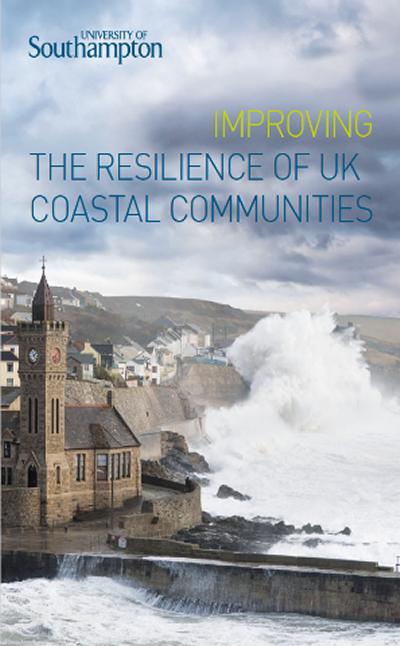
Policy Briefs
Click to read UoS Students and Academics reflecting on their experience of engaging with PPS and policymakers.

Coastal policy documents increasingly talk about resilience as a goal, but they are often vague and unclear about what this means in practise. As a society we have been successful in reducing coastal risks from flooding and erosion since the 1953 disaster, but how can we enhance resilience to these same hazards? Building on developments by the US Army Corps of Engineers, the NERC ‘CoastalRes’ project has developed an approach to assess coastal resilience and this has been demonstrated for England. It shows how resilience to coastal flood and erosion hazard could be measured and applied within
existing policy processes. As the extent of climate change impacts become apparent, adapting to evolving and less certain hazards, determining thresholds or trigger points, and balancing competing demands on the coast is increasingly important.
At the same time, it is also clear that some flooding and erosion will have to be tolerated and in many locations space for rising seas will have to be created. Resilience is a broad concept that incorporates, but goes beyond, risk to consider the ability to anticipate and recover from adverse events that will inevitably occur. Resilience and the enhancement of resilience is therefore becoming increasingly prominent in English policy documents.
However, the adoption of resilience as an overarching framework for strategic coastal hazard management has to date been limited.
Resilience is defined pragmatically, in economic, environmental and social terms, integrating what is presently a disparate set of policy objectives for coastal areas. This definition includes several dimensions of resilience and a set of composite indicators are developed for each of these, grounded empirically with reference to available national geospatial datasets. A prototype coastal resilience model has been developed, which generates a quantitative resilience
index both in space and in time (using appropriate scenarios). In the ‘CoastalRes’ project, resilience was defined as “the ability of a system to prepare, resist, recover, and adapt to disturbances in order to achieve successful functioning through time”.
Our prototype coastal resilience model uses the scores and weights to generate a quantitative resilience index. To apply this spatially, the coast is divided into units that capture the extent of erosion and flooding, allowing an index to be compiled at varying levels of resolution. This defines the state of resilience at a point in time. Changes in time can be examined by using scenarios to model how measures are likely to respond to changes in the natural environment (such as sea level rise) and the projected impact of policy responses. Human preferences are essential to evaluating resilience and a range of different stakeholder perspectives are captured using relative indicator weightings.

Click to read UoS Students and Academics reflecting on their experience of engaging with PPS and policymakers.

Click here to listen to our Policy Podcast series. In each episode we speak to the UoS researchers and experts, about their experiences in the domestic and foreign policies.

Guidance on the many channels available to researchers to engage with policymakers.

Guidance on things to consider in the science to policy process and useful tips in planning and costing your impact activities.